 W
WIn music, the organ is a keyboard instrument of one or more pipe divisions or other means for producing tones, each played with its own keyboard, played either with the hands on a keyboard or with the feet using pedals.
 W
WThe American Theatre Organ Society (ATOS) is an American non-profit organization, dedicated to preserving and promoting the theatre pipe organ and its musical art form.
 W
WThe Autophone was an early type of organette, invented in 1878 by Henry Bishop Horton. One of the first table-top organettes to be mass-produced, it played music using punched cards to activate 22 reeds.
 W
WThe High Tide Organ is a tidal organ 15 metres tall constructed in 2002 as part of "The Great Promenade Show" series of sculptures situated along Blackpool's New Promenade in the UK. The artwork, described as a "musical manifestation of the sea", is one of a few examples of a tidal organ; others include the San Francisco Wave Organ and the Sea Organ in Croatia.
 W
WBook music is a medium for storing the music played on mechanical organs, mainly of European manufacture. Book music is made from thick cardboard, containing perforated holes specifying the musical notes to be played, with the book folded zig-zag style. Unlike the heavy pinned barrels, which could only contain a few tunes of fixed length, that had been used on earlier instruments, book music enabled large repertoires to be built up. The length of each tune was no longer determined by the physical dimensions of the instrument.
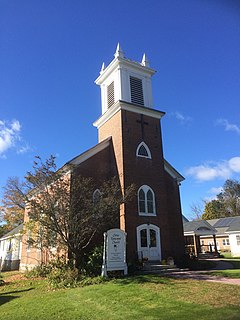 W
WChrist Episcopal Church is a historic Episcopal church located on the town green of Bethlehem, Connecticut. Founded as a parish early in the 19th century, it has been a central part of the life of the town ever since. The building is an outstanding example of Gothic Revival architecture, and its unique metal roof helps incorporate it visually with other historic buildings in the area around the green. Major renovations were designed by R. W. Hill, a noted Waterbury architect, early in his career. It also houses a Jardine tracker organ designed in 1855. Along with the First Congregational Church across the street and the Bellamy-Ferriday House on another side of the town green, Christ Episcopal Church helps anchor the historic center of this small rural town in Litchfield County, Connecticut.
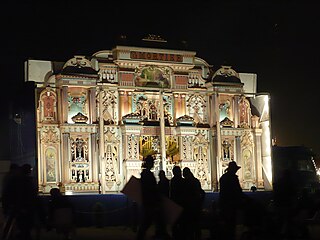 W
WA dance organ is a mechanical organ designed to be used in a dance hall or ballroom. Being intended for use indoors, dance organs tend to be quieter than the similar fairground organ.
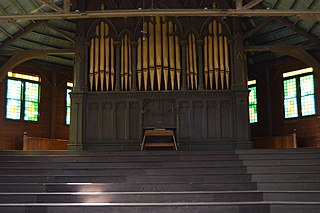 W
WThe Davis-Ferris Organ, built in 1847, is the oldest three-manual pipe organ that has escaped significant alteration in the United States. It is located in the Round Lake Auditorium in the village of Round Lake, New York. Originally located in the Calvary Church in Manhattan, it was moved to its present location in 1888, where it was used in Chautauqua-like summer programs into the 1920s. It is now owned and maintained by the village. It was designated a National Historic Landmark in 2016.
 W
WDraaiorgel de Vijf Beelden, or De Vijf Beeldenkast was a Dutch street organ with 52 keys.
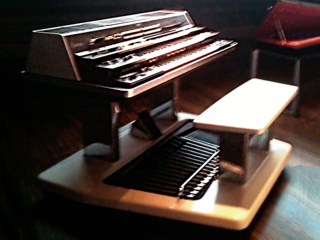 W
WAn electric organ, also known as electronic organ, is an electronic keyboard instrument which was derived from the harmonium, pipe organ and theatre organ. Originally designed to imitate their sound, or orchestral sounds, it has since developed into several types of instruments:Hammond-style organs used in pop, rock and jazz; digital church organs, which imitate pipe organs and are used primarily in churches; other types including combo organs, home organs, and software organs.
 W
WGerman Jubilate Harmonium Reeds are brass reeds used in Indian harmoniums that were manufactured in Germany between 1911 and the early 1960s. The reeds were originally manufactured for American style suction reed organs being manufactured in Germany on machinery that was bought second hand in Chicago in the United States and imported to Germany by Karl Mannborg son of Theodor Mannborg. Mannborg owned the factory in Pegau, Germany supplying organ parts for American style suction reed organs. Germany was the only country in Europe that was manufacturing American style suction reed organs while the rest of the reed organ industry in Europe was making pressure reed Harmoniums.
 W
WThe pump organ is a type of free-reed organ that generates sound as air flows past a vibrating piece of thin metal in a frame. The piece of metal is called a reed. Specific types of pump organ include the reed organ, harmonium, and melodeon. The idea for the free reed was imported from China through Russia after 1750, and the first Western free-reed instrument was made in 1780 in Denmark.
 W
WThe Harmonium Art museuM (HAM) is a museum on pump organs in the province of Antwerp, Belgium. It is located at the former Church of the Immaculate Conception in Klein-Willebroek.
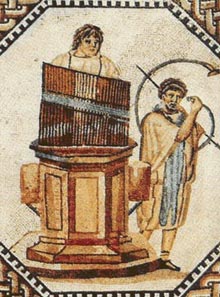 W
WThe Hydraulis of Dion Greek: Ύδραυλις του Δίου; romanized: Ídravlis tou Díou) is a unique exhibit of the Archaeological Museum of Dion. It is the earliest archeological example of a water organ to date.
 W
WThe Kulturpalast Dresden is a modernist building built by Wolfgang Hänsch during the era of the German Democratic Republic. It was the largest multi-purpose hall in Dresden when it opened in 1969, and was used for concerts, dances, conferences and other events. The building underwent several years of reconstruction beginning in 2012 and opened with a new concert hall in April 2017.
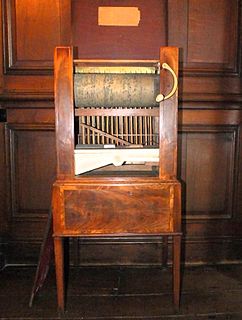 W
WThe chamber barrel organ by John Langshaw in the collections of Lancashire Museums is currently on display at the Judges' Lodgings museum in the city of Lancaster, England.
 W
WOrgan shoes are shoes worn by organists designed to facilitate playing of the organ pedal keyboard. Since organ shoes are worn only at the organ, the use of special footwear also avoids picking up grit or grime that could scar or stain the pedal keys.
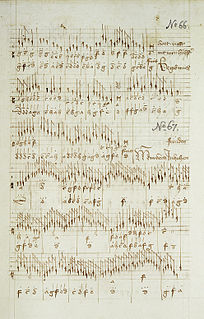 W
WOrgan tablature is a form of musical notation used by the north German Baroque organ school, although there are also forms of organ tablature from other countries such as Italy, Spain, Poland, and England. Portions of Johann Sebastian Bach's Orgelbüchlein are written in tablature, as are a great deal of the surviving manuscripts of the organ works of Dieterich Buxtehude and other north German organ composers of the Baroque era.
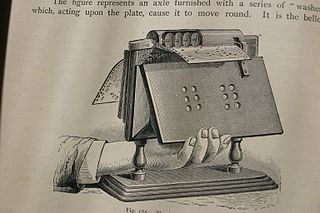 W
WThe Organette was a mechanical free-reed instrument first manufactured in the late 1870s by several companies such John McTammany of Cambridge MA, the Autophone Company of Ithaca NY, the Automatic Organ Co of Boston MA, E.P. Needham & Sons of New York NY, J.M. Draper of Blackburn, England, Paul Ehrlich & Co. of Leipzig Germany, and The Mechanical Orguinette Co. of New York NY as well as other manufacturers worldwide.
 W
WA pedalboard is a keyboard played with the feet that is usually used to produce the low-pitched bass line of a piece of music. A pedalboard has long, narrow lever-style keys laid out in the same semitone scalar pattern as a manual keyboard, with longer keys for C, D, E, F, G, A and B, and shorter, raised keys for C♯, D♯, F♯, G♯ and A♯. Training in pedal technique is part of standard organ pedagogy in church music and art music.
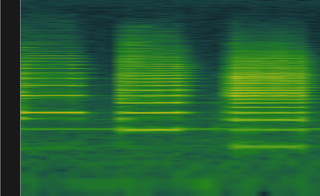 W
WPedal tones are special low notes in the harmonic series of brass instruments. A pedal tone has the pitch of its harmonic series' fundamental tone. Its name comes from the foot pedal keyboard pedals of a pipe organ, which are used to play 16' and 32' sub-bass notes by pressing the pedals with the player's feet. Brasses with a bell do not naturally vibrate at this frequency.
 W
WA positive organ is a small, usually one-manual, pipe organ that is built to be more or less mobile. It was common in sacred and secular music between the 10th and the 18th centuries, in chapels and small churches, as a chamber organ and for the basso continuo in ensemble works. The smallest common kind of positive, hardly higher than the keyboard, is called chest or box organ and is especially popular nowadays for basso continuo work; positives for more independent use tend to be higher.
 W
WThe pump organ is a type of free-reed organ that generates sound as air flows past a vibrating piece of thin metal in a frame. The piece of metal is called a reed. Specific types of pump organ include the reed organ, harmonium, and melodeon. The idea for the free reed was imported from China through Russia after 1750, and the first Western free-reed instrument was made in 1780 in Denmark.
 W
WThe regal is a small portable organ, furnished with beating reeds and having two bellows. The instrument enjoyed its greatest popularity during the Renaissance. The name was also sometimes given to the reed stops of a pipe organ, and more especially the vox humana stop.
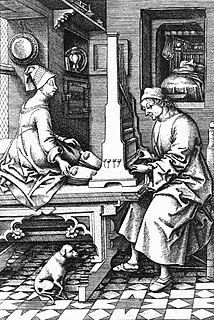 W
WA residence organ is a musical organ installed in a personal home. Strictly speaking, the names residence and house organ are the most correct, the others being types of organs that can physically be used as residence organs, but that are not restricted to use solely in that context, and can also be used in, say, small churches, theatres, and so forth. A portative organ or a positive organ can be used in a residential setting, but the notion of a residence organ strictly embodies a permanence of place that is belied by the notion of portability embodied by the portatives and positives. Similarly, a chamber organ is in general a small organ for a room, but not necessarily for a room of someone's home.
 W
WThe Sea organ is an architectural sound art object located in Zadar, Croatia and an experimental musical instrument, which plays music by way of sea waves and tubes located underneath a set of large marble steps.
 W
WA serinette is a type of mechanical musical instrument consisting of a small barrel organ. It appeared in the first half of the 18th century in eastern France, and was used to teach tunes to canaries. Its name is derived from the French serin, meaning “canary.”
 W
WA street organ played by an organ grinder is a French-German automatic mechanical pneumatic organ designed to be mobile enough to play its music in the street. The two most commonly seen types are the smaller German and the larger Dutch street organ.
 W
WA theatre organ is a distinct type of pipe organ originally developed to provide music and sound effects to accompany silent films during the first 3 decades of the 20th century.
 W
WThe water organ or hydraulic organ is a type of pipe organ blown by air, where the power source pushing the air is derived by water from a natural source or by a manual pump. Consequently, the water organ lacks a bellows, blower, or compressor.
 W
WThe Wave Organ is a sculpture located in San Francisco, California. It was constructed on the shore of San Francisco Bay in May 1986 by the Exploratorium, and more specifically, by installation artist and the Exploratorium artist-in-residence Peter Richards, who conceived and designed the organ, working with stonemason George Gonzales.
 W
WA wind organ is a musical instrument designed to be 'played' by the wind. Designs of wind organs vary depending on the artist constructing the organ. Some are made of hollow receptacles that sound as the wind blows across their mouths while others are constructed from taut metal wires that 'sing' when the wind blows against them, similar to the way wire fences vibrate in the wind.